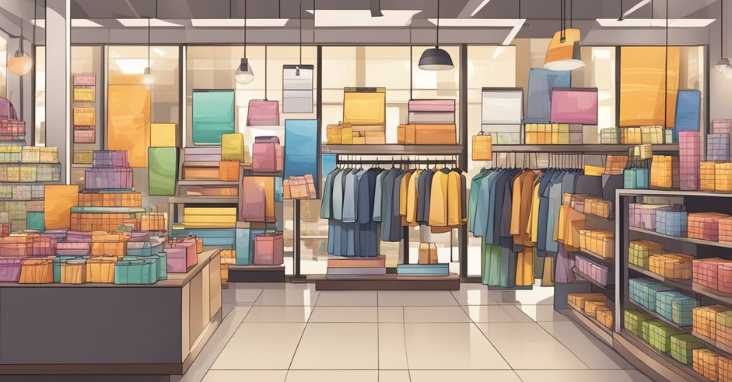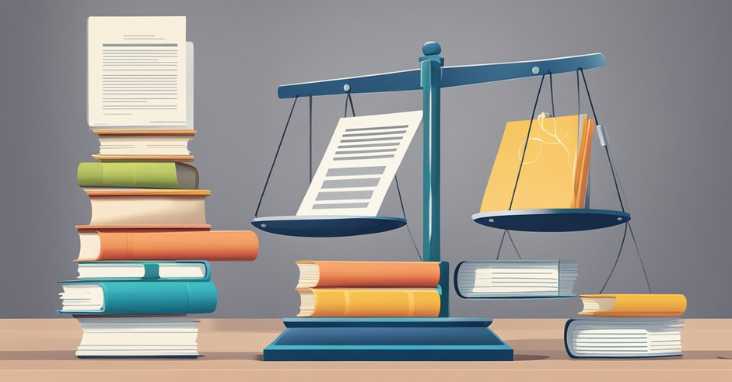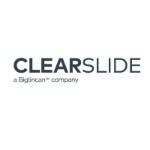What is promotional pricing ? Promotional pricing is a sales strategy using temporary discounts to quickly boost customer interest and increase sales.
Promotional pricing is a marketing strategy that involves offering discounts or special offers to customers for a limited time. It is used to attract customers, increase sales, and create brand awareness. Promotional pricing can be an effective tool for businesses looking to boost revenue and attract new customers.

Understanding Promotional Pricing
Promotional pricing is a pricing strategy that involves offering discounts or special offers to customers for a limited time. It is used to attract customers, increase sales, and create brand awareness. Promotional pricing can be an effective tool for businesses looking to boost revenue and attract new customers. When implementing promotional pricing, businesses must consider a number of factors, including the impact on sales and revenue, customer dynamics, and legal and ethical considerations.
Key Takeaways
- Promotional pricing is a marketing strategy that involves offering discounts or special offers to customers for a limited time.
- Businesses must consider a number of factors when implementing promotional pricing, including the impact on sales and revenue, customer dynamics, and legal and ethical considerations.
- Promotional pricing can be an effective tool for businesses looking to boost revenue and attract new customers.
Understanding Promotional Pricing
Definition and Purpose
Promotional pricing is a pricing strategy used by businesses to attract customers and increase sales. It involves offering discounts or special deals on products or services for a limited time. The purpose of promotional pricing is to create a sense of urgency and encourage customers to make a purchase.
Promotions can take many different forms, including buy-one-get-one-free (BOGOF) deals, flash sales, and seasonal sales. Flash sales are short-term promotions that typically last for only a few hours or days. Seasonal sales are promotions that coincide with holidays or special events, such as Black Friday or Christmas.
Types of Promotional Pricing
There are several types of promotional pricing that businesses can use to attract customers. One popular type is the BOGOF deal, which offers customers a free item when they purchase another item at full price. This type of promotion is often used to clear out inventory or introduce new products.
Another type of promotional pricing is the flash sale, which offers deep discounts on products for a short period of time. Flash sales are often used to create buzz and generate excitement around a product or service.
Finally, seasonal sales are promotions that coincide with holidays or special events. These promotions can be a great way to boost sales during slow periods and attract new customers.
To learn more about promotional pricing and how it can benefit your business, check out this article from Forbes.
Strategic Planning for Promotional Pricing
Promotional pricing is a powerful tool for businesses to attract new customers, increase sales, and retain existing customers. However, to be effective, promotional pricing must be strategically planned and executed. This section will discuss the key elements of strategic planning for promotional pricing.
Setting Objectives
The first step in strategic planning for promotional pricing is to set clear objectives. Objectives should be specific, measurable, achievable, relevant, and time-bound (SMART). Objectives may include increasing sales, attracting new customers, retaining existing customers, or promoting a new product or service.
Targeting the Right Audience
The second step in strategic planning for promotional pricing is to target the right audience. Businesses should identify their target market and tailor their promotional pricing strategy to appeal to that market. This may involve offering discounts or promotions to specific customer segments, such as first-time buyers or loyal customers.
Timing Considerations
The third step in strategic planning for promotional pricing is to consider timing. Promotional pricing should be timed to coincide with key events or seasons, such as holidays, back-to-school season, or the launch of a new product. Timing can also be influenced by the competitive market and the marketing campaign.
To learn more about strategic planning for promotional pricing, check out this resource from Forbes Agency Council.
Implementing Promotional Pricing
Promotional pricing is a sales strategy that involves offering discounts or special pricing on products and services for a limited time. When implemented effectively, promotional pricing can increase sales and customer loyalty. In this section, we will discuss the key steps involved in implementing promotional pricing.
Selecting Products and Services
The first step in implementing promotional pricing is to select the products and services that will be included in the promotion. It is important to choose products and services that are popular with customers and have a high profit margin. This will ensure that the promotion is effective in increasing sales and profitability.
Pricing and Discount Strategies
Once the products and services have been selected, the next step is to determine the pricing and discount strategies. There are several different strategies that can be used, including percentage discounts, dollar amount discounts, buy-one-get-one-free offers, and free gifts with purchase.
It is important to carefully consider the pricing and discount strategies to ensure that they are effective in achieving the desired results. For example, a percentage discount may be more effective for higher-priced items, while a dollar amount discount may be more effective for lower-priced items.
Marketing and Advertising
The final step in implementing promotional pricing is to develop a marketing and advertising campaign to promote the promotion. This can include creating promotional materials such as flyers, posters, and social media posts, as well as running advertisements in newspapers, radio, and television.
It is important to ensure that the messaging in the marketing and advertising campaign is clear and compelling. This will help to attract customers and increase sales. Additionally, it is important to track the results of the promotional pricing campaign to determine its effectiveness and make any necessary adjustments.
By following these key steps, businesses can effectively implement promotional pricing to increase sales and profitability. For more information on promotional pricing strategies, check out this link.
Impact on Sales and Revenue

Promotional pricing can have a significant impact on sales and revenue for businesses. By offering discounts and special deals, companies can attract new customers and encourage existing ones to make more purchases. In this section, we will explore the various ways that promotional pricing can affect sales volume, revenue growth, and cash flow.
Boosting Sales Volume
One of the most obvious benefits of promotional pricing is that it can help to boost sales volume. By offering discounts or other incentives, businesses can attract customers who might not otherwise have made a purchase. This can be especially effective for businesses that are trying to break into new markets or reach new customer segments.
Revenue Growth
In addition to boosting sales volume, promotional pricing can also lead to revenue growth. This is because even though the business may be selling products at a lower price, the increase in sales volume can more than make up for the lower profit margins. Additionally, promotional pricing can help to generate buzz and excitement around a product or service, which can lead to increased sales even after the promotion has ended.
Influence on Cash Flow
While promotional pricing can be an effective way to boost sales and revenue, it can also have an impact on cash flow. This is because businesses may need to invest in additional inventory or marketing materials in order to support the promotion. Additionally, if the promotion is too successful, the business may experience a temporary cash flow crunch as it struggles to keep up with increased demand.
Overall, promotional pricing can be a powerful tool for businesses looking to increase sales volume, revenue growth, and overall profitability. However, it is important to carefully consider the potential impact on cash flow and to ensure that the promotion is sustainable over the long term.
Here is an article from Forbes that further explores the pros and cons of promotional pricing.
Customer Dynamics

Promotional pricing is an effective way to attract new customers, build customer loyalty, and enhance the perceived value and quality of a product or service. Understanding customer dynamics is essential to developing a successful promotional pricing strategy.
Attracting New Customers
Promotional pricing can be an effective tool for attracting new customers. By offering discounts or special deals, businesses can entice customers who may not have otherwise considered their product or service. However, it is important to ensure that the promotional pricing is sustainable and does not result in a loss of profit in the long run.
One effective way to attract new customers is through social media advertising. By targeting specific demographics and interests, businesses can reach a wider audience and increase their chances of attracting new customers. Additionally, offering referral discounts or partnering with other businesses can also help attract new customers.
Building Customer Loyalty
Promotional pricing can also be used to build customer loyalty. By offering exclusive discounts or loyalty programs, businesses can incentivize customers to continue purchasing their products or services. This can lead to increased customer retention and higher profits in the long run.
One effective way to build customer loyalty is through personalized promotions. By tailoring promotions to individual customers based on their purchasing history or interests, businesses can show that they value their customers and are invested in their satisfaction.
Perceived Value and Quality
Promotional pricing can also enhance the perceived value and quality of a product or service. By offering discounts or special deals, businesses can create a sense of urgency and exclusivity around their offerings. This can lead customers to perceive the product or service as more valuable and of higher quality.
One effective way to enhance perceived value and quality is through limited-time promotions. By offering discounts or special deals for a limited time, businesses can create a sense of urgency and exclusivity that can lead to increased sales and customer satisfaction.
In conclusion, understanding customer dynamics is essential to developing a successful promotional pricing strategy. By attracting new customers, building customer loyalty, and enhancing the perceived value and quality of a product or service, businesses can increase their profits and improve customer satisfaction. For more information on promotional pricing strategies, check out this article by Forbes.
Advantages and Disadvantages

Pros of Promotional Pricing
Promotional pricing is a marketing strategy that offers discounts or special deals to customers for a limited time. This technique can have several advantages for businesses.
Firstly, it can increase sales and revenue. By offering discounts, businesses can attract more customers who are looking for a good deal. This can lead to increased sales and revenue, especially during slow periods.
Secondly, promotional pricing can help businesses clear out excess inventory. If a business has too much stock, they can offer discounts to encourage customers to buy more products. This can help businesses free up space and generate revenue at the same time.
Thirdly, promotional pricing can help businesses attract new customers. By offering discounts, businesses can entice people who may not have tried their products or services before. This can help businesses expand their customer base and increase brand awareness.
Cons of Promotional Pricing
While promotional pricing can have several advantages, it also has some disadvantages that businesses should consider before implementing this strategy.
Firstly, promotional pricing can lead to a perception of lower quality. If a business is constantly offering discounts, customers may begin to question the quality of their products or services. This can damage the brand perception and result in a loss of customers.
Secondly, promotional pricing can lead to price wars. If multiple businesses in the same industry are offering discounts, it can lead to a race to the bottom in terms of pricing. This can be detrimental to all businesses involved and result in lower profits.
Thirdly, promotional pricing can create a price perception that is difficult to change. If customers become used to discounted prices, they may be less willing to pay full price in the future. This can make it difficult for businesses to increase their prices in the long run.
In conclusion, while promotional pricing can have several advantages, it also has some drawbacks that businesses should consider before implementing this strategy. By carefully weighing the pros and cons, businesses can make informed decisions about whether or not to offer discounts to their customers.
For more information on promotional pricing, check out this article by Shopify.
Promotional Pricing in Different Industries

Promotional pricing is a marketing strategy used by many businesses to attract customers and increase sales. It involves offering discounts or special deals on products or services for a limited time. This section will explore how promotional pricing is used in different industries and provide examples of how businesses implement this strategy.
Retail and E-commerce
Retailers and e-commerce businesses often use promotional pricing to drive sales. They may offer discounts on specific products or entire product lines to encourage customers to make a purchase. For example, during the holiday season, many retailers offer Black Friday and Cyber Monday deals to entice shoppers to buy gifts for their loved ones. According to a study by the National Retail Federation, in 2023, retailers saw a 6.7% increase in sales during the holiday season due to promotional pricing.
One example of a successful promotional pricing campaign in e-commerce is Amazon’s Prime Day. This annual event offers exclusive deals to Amazon Prime members, resulting in a surge of sales for the company. In 2022, Amazon reported that Prime Day resulted in over $11 billion in sales.
Service-Oriented Businesses
Service-oriented businesses, such as gyms and airlines, can also benefit from promotional pricing. Gyms may offer discounted membership rates or waive initiation fees to attract new members. Airlines may offer discounted fares during off-peak travel times to encourage more bookings.
One example of a successful promotional pricing campaign in the service industry is Uber’s surge pricing. During peak times, such as holidays or rush hour, Uber increases its prices to encourage more drivers to work and meet the high demand. This helps ensure that customers can always find a ride, even during busy times.
Restaurants and Hospitality
Restaurants and hospitality businesses can use promotional pricing to attract new customers and increase sales. They may offer discounts on certain menu items or create special meal deals to encourage customers to try new dishes. For example, many restaurants offer prix fixe menus during Restaurant Week to entice diners to try new restaurants.
One example of a successful promotional pricing campaign in the hospitality industry is Hotels.com’s Rewards program. Customers can earn points for every night they stay at a participating hotel, which can then be redeemed for free nights or discounts on future bookings.
Overall, promotional pricing can be an effective marketing strategy for businesses in a variety of industries. By offering discounts or special deals, businesses can attract new customers, increase sales, and build brand loyalty. For more information on promotional pricing, check out this article from Inc.
Long-Term Considerations

When it comes to promotional pricing, it’s important to consider the long-term impact on a business. While short-term gains may be tempting, it’s important to think about how these promotions will affect the brand image and customer retention in the future.
Brand Image and Awareness
Promotional pricing can have a significant impact on a company’s brand image and perception in the marketplace. For example, if a business is constantly offering discounts and promotions, it may be perceived as lower quality or less valuable than competitors who don’t heavily rely on promotions. On the other hand, a well-planned promotion can increase brand awareness and improve brand perception.
One way to mitigate the potential negative impact on brand image is to offer promotions selectively and strategically. By targeting specific products or services, a business can maintain a premium image while still offering promotions to incentivize purchases.
Customer Retention Strategies
Promotions can also play a role in customer retention. By offering discounts or rewards to loyal customers, businesses can encourage repeat purchases and build brand loyalty. Loyalty programs are a popular way to reward customers for their repeat business and keep them coming back.
It’s important to note that promotions alone may not be enough to retain customers. Providing exceptional customer service and a positive overall experience are also key factors in customer retention.
Market Positioning
Promotions can also impact a business’s market positioning. By offering lower prices than competitors, a business can attract price-sensitive customers and potentially gain market share. However, this strategy may not be sustainable in the long term and can lead to a race to the bottom in terms of pricing.
Alternatively, a business can use promotions to differentiate itself from competitors in other ways, such as offering exclusive products or services. This can help the business stand out in a crowded market and attract customers who are willing to pay a premium for unique offerings.
Overall, promotional pricing can be an effective tool for businesses, but it’s important to consider the long-term impact on brand image, customer retention, and market positioning. By using promotions selectively and strategically, businesses can achieve short-term gains while still maintaining a strong position in the marketplace.
For more information on the importance of brand perception and retention, check out this resource.
Case Studies and Real-World Examples

Promotional pricing is a popular marketing strategy used by brands to increase sales and attract new customers. In this section, we will explore some successful and failed promotional campaigns and the lessons we can learn from them.
Successful Promotional Campaigns
One example of a successful promotional campaign is the launch of the iPhone 11 by Apple. The company offered a trade-in program, which allowed customers to trade in their old iPhones for a discount on the new one. This promotion helped Apple increase sales and attract new customers.
Another successful promotional campaign was run by Domino’s Pizza. The company offered a 50% discount on all online orders for a limited time. This promotion helped Domino’s increase sales and attract new customers, and it also helped the company improve its online ordering system.
Lessons from Failed Promotions
Not all promotional campaigns are successful. One example of a failed promotion is the launch of the Microsoft Surface RT tablet. The company offered a $499 price point, which was higher than the price of the iPad. This promotion failed to attract customers, and Microsoft was forced to write off $900 million in unsold inventory.
Another failed promotion was run by J.C. Penney. The company eliminated all sales and promotions and offered everyday low prices instead. This promotion failed to attract customers, and J.C. Penney lost millions of dollars in sales.
From these case studies, we can learn that successful promotional campaigns offer real value to customers. Discounts and trade-ins are effective ways to attract customers, but the price point should be competitive. Failed promotions often result from unrealistic pricing strategies or a lack of understanding of customer needs.
For more information on successful promotional pricing strategies, check out this article by Forbes.
Technological Integration

In today’s competitive market, promotional pricing has become an essential part of marketing strategies. With the integration of technology, businesses can now offer personalized promotions to their customers, increasing customer engagement and loyalty. This section will explore the different software solutions available for promotional pricing and how businesses can leverage them for their benefit.
Software Solutions for Promo Pricing
There are various software solutions available that can help businesses set up and manage promotional pricing campaigns. These software solutions can automate the process of creating and managing promotions, making it easier for businesses to offer promotions to their customers. One such solution is HubSpot’s Marketing Hub, which provides a range of tools for creating and managing promotional campaigns.
HubSpot’s Marketing Hub offers an easy-to-use interface and a range of features that businesses can use to create targeted promotions. These features include email marketing, social media marketing, and landing pages. With HubSpot’s Marketing Hub, businesses can track the success of their promotional campaigns and make adjustments as needed.
Personalized Promotions
Personalized promotions are becoming increasingly popular as businesses look for ways to engage with their customers on a more personal level. By leveraging data analysis, businesses can create personalized promotions that are tailored to the individual customer’s needs and preferences.
One software solution that can help businesses create personalized promotions is Salesforce’s Marketing Cloud. Salesforce’s Marketing Cloud provides a range of tools for creating and managing personalized promotions, including email marketing, social media marketing, and mobile marketing.
With Salesforce’s Marketing Cloud, businesses can analyze customer data to create targeted promotions that are more likely to resonate with customers. By leveraging data analysis, businesses can also track the success of their promotional campaigns and make adjustments as needed.
Overall, the integration of technology has made it easier for businesses to offer promotional pricing and personalized promotions to their customers. By leveraging software solutions and data analysis, businesses can create targeted promotions that are more likely to resonate with customers, increasing customer engagement and loyalty.
Here is a link to Salesforce’s Marketing Cloud resource page for more information.
Legal and Ethical Considerations

Compliance with Pricing Laws
When offering promotional pricing, businesses must ensure that they comply with all relevant pricing laws and regulations. Failure to do so can result in legal penalties, damaged reputation, and loss of customer trust. It is important to note that pricing laws can vary by jurisdiction, so businesses must be aware of the laws that apply to them.
One important law to consider is the Federal Trade Commission’s (FTC) “Guides Against Deceptive Pricing.” These guidelines prohibit businesses from using deceptive pricing tactics, such as false reference prices or bait-and-switch pricing. Businesses must also ensure that they accurately disclose all terms and conditions of the promotion, including any limitations or exclusions.
To ensure compliance with pricing laws, businesses should consult with legal experts and stay up-to-date on any changes in pricing regulations. The FTC website provides helpful resources and information on pricing laws for businesses.
Ethical Pricing Practices
In addition to complying with pricing laws, businesses must also consider the ethical implications of their promotional pricing strategies. Ethical pricing practices involve treating customers fairly and transparently, without misleading or deceiving them.
One important consideration is the use of psychological pricing tactics, such as ending prices in .99 or using large font sizes to emphasize discounts. While these tactics can be effective, they can also be seen as manipulative and deceptive. Businesses should use these tactics sparingly and with transparency.
Another consideration is the use of dynamic pricing, which involves adjusting prices based on factors such as demand or customer behavior. While this can be an effective pricing strategy, it can also be seen as discriminatory or unfair. Businesses should ensure that their dynamic pricing strategies are transparent and do not unfairly target certain customers.
Overall, businesses must balance the need to offer competitive promotional pricing with the need to maintain ethical and legal standards. By staying informed and transparent, businesses can build customer trust and loyalty while avoiding legal and ethical pitfalls.
Here is a link to the FTC’s guidelines on advertising and marketing.
Frequently Asked Questions

What are the typical strategies employed in promotional pricing?
Promotional pricing is a powerful tool for businesses to attract customers and increase sales. Some of the common strategies employed in promotional pricing include offering discounts, coupons, rebates, and bundle deals. These tactics are designed to create a sense of urgency and encourage customers to make a purchase.
How do promotional pricing tactics impact consumer behavior?
Promotional pricing tactics can have a significant impact on consumer behavior. Customers are more likely to make a purchase if they perceive that they are getting a good deal. Promotional pricing can also create a sense of excitement and anticipation, which can lead to increased sales and customer loyalty.
What are the potential drawbacks of using promotional pricing for businesses?
While promotional pricing can be an effective way to increase sales, there are also potential drawbacks to consider. For example, businesses may experience a decrease in profit margins if they offer too many discounts or promotions. Additionally, promotional pricing can sometimes attract bargain-hunting customers who are less likely to become repeat customers.
In what ways does promotional pricing influence market competition?
Promotional pricing can have a significant impact on market competition. When businesses offer discounts and promotions, it can create a race to the bottom, where competitors try to undercut each other’s prices. This can be beneficial for consumers, but it can also make it difficult for businesses to maintain profitability.
Can promotional pricing be effectively integrated into a comprehensive marketing plan?
Yes, promotional pricing can be an effective component of a comprehensive marketing plan. However, it is important to use it strategically and in conjunction with other marketing tactics. For example, businesses may want to use promotional pricing to drive traffic to their website or store, but also use email marketing and social media to build relationships with customers and encourage repeat purchases.
What legal considerations must be taken into account when implementing promotional pricing?
Businesses must be careful to comply with all relevant laws and regulations when implementing promotional pricing. For example, businesses must ensure that their advertising is not misleading or deceptive, and that they are not engaging in price fixing or other anti-competitive practices. The Federal Trade Commission provides guidance on these issues, and businesses should consult with legal counsel if they have any questions or concerns.
For more information on promotional pricing, check out this article from Investopedia.















